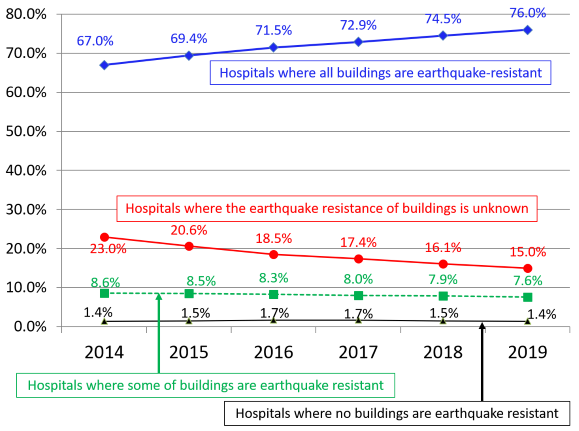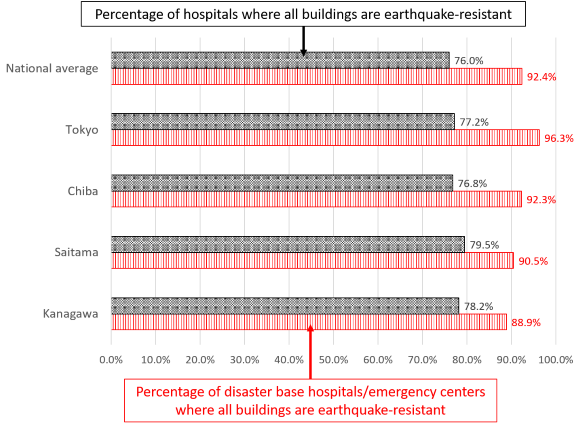Column Finance and the Social Security System 2020.09.25
【Aging, safety net and fiscal crisis in Japan】No.277:Hospitals’ earthquake resistance
In this column series, Yukihiro Matsuyama, Research Director at CIGS introduces the latest information about aging, safety net and fiscal crisis in Japan with data of international comparison.
Although society has been in great turmoil due to the spread of coronavirus disease, the Japanese should not forget the importance of preparedness for the next earthquake. In August 2020, the Ministry of Health, Labour and Welfare released a report on hospitals’ earthquake resistance capability. In September 2019, there were 8,311 hospitals in Japan. As shown in Figure 1, the percentage of hospitals with earthquake-resistant buildings increased from 67.0% in 2014 to 76.0% in 2019. However, at this rate, it seems difficult to realize the government’s plan to raise this figure to 80% by March 2021.
The next big earthquake is expected to occur in the capital area, which consists of four prefectures—Tokyo, Kanagawa, Saitama, and Chiba—with 28.9% of the total population (Figure 2). The 8,311 hospitals included 749 disaster base hospitals/emergency centers. Since these facilities would play an important role in the event of a large earthquake, ideally, 100% of the hospitals should be earthquake resistant. However, the national average was at 92.4% (Figure 3). While the percentage for those in Tokyo was 96.3%, the percentages for Chiba, Saitama, and Kanagawa were 92.3%, 90.5%, and 88.9%, respectively, and they were lower than the national average.
Figure 1 Percentage of earthquake-resistant
hospitals

Source: Ministry of Health, Labour and
Welfare
Figure 2 Capital area and population

Source: Ministry of Internal Affairs and Communications
Figure 3 Percentage of hospitals where all
buildings are earthquake resistant

Source: Ministry of Health, Labour and Welfare
